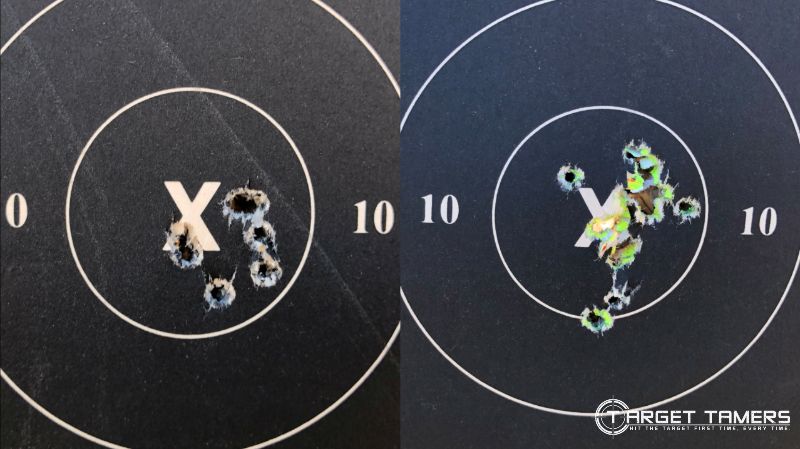Does dot size matter?
In general, the linear equivalent of 2 MOA is 2” at 100 yards while 6 MOA is 6” at 100 yards. The smaller dot excels for longer distances, potential accuracy improvement, and minimal subtension. A larger dot is best suited for close-range engagements and faster sight alignment.
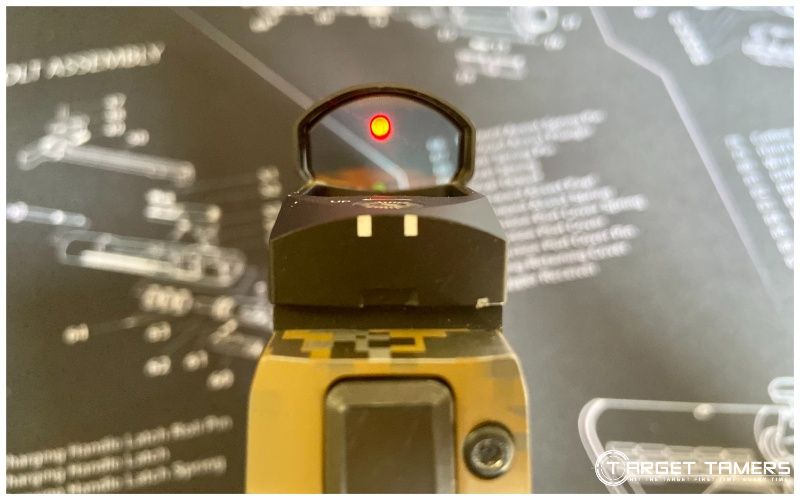
I compare 2 MOA vs 6 MOA dots to determine if a smaller or larger dot is better when it comes to speed, accuracy, hunting, self-defense, and more.
Let’s consider these points to establish how size matters.
Why Trust Us?
After hundreds of hours of hand-testing scopes and red dot sights in the field and at the range, and thousands more hours researching and writing about them, we feel we earn the title of experts when it comes to optics!
We purchase as many of the optics for our tests as possible, and run them through their paces to make sure they will perform at the range and in the field.
Our combined decades of experience from plinking and varmint hunting, to big game hunting and competitions has been integral in putting together this comparison guide of 2 MOA VS 6 MOA dots!
Get the inside scoop on how we test optics here.
2 MOA VS 6 MOA: Size Matters
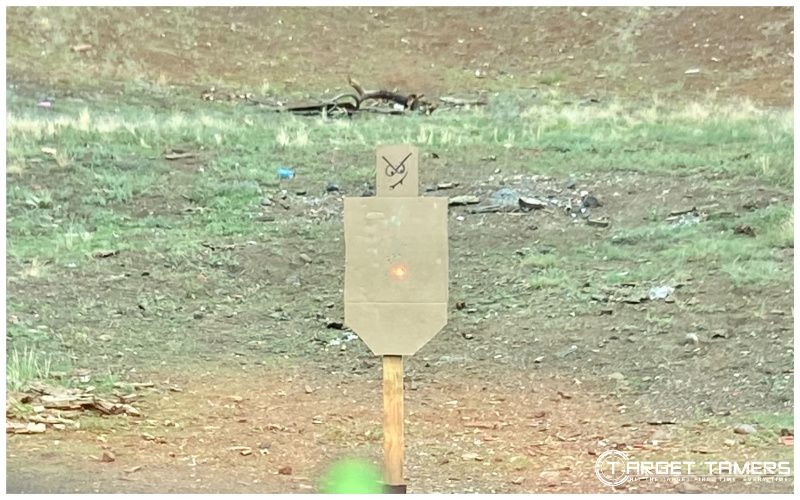
Red dot sights come with dots of all sizes usually starting at 2 MOA and can get as big as 8 MOA. On pistol red dot sights, 3 MOA, 6 MOA, and 8 MOA dots are common. Rifle-mounted pistol sights are physically bigger in size, the optics are enclosed, and dots are usually 2 MOA and 4 MOA.
When it comes to comparing 2 and 6 MOA dots, it boils down to the application. What are you planning on doing with it most of the time? As you consider various factors to help decide which size dot is right for you, you’ll recognize that size matters.
Dot Size
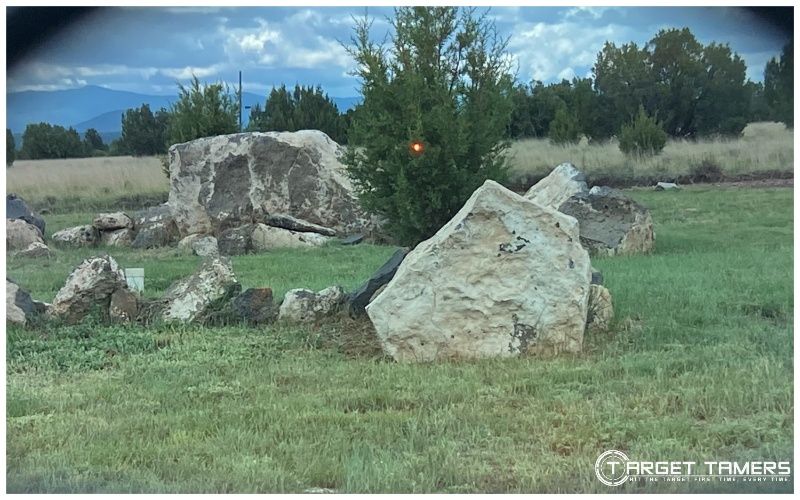
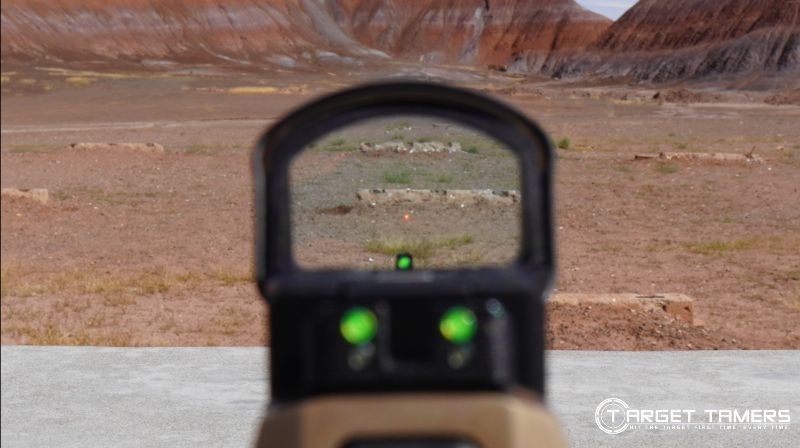
To begin with, MOA stands for minute of angle. This is an angular measurement that we use on scopes and red dot sights to compensate for a bullet’s path downrange. At 100 yards, 1 MOA is approximately 1” in size.
A 2 MOA dot is approximately 2” in size at 100 yards, and 6 MOA is approximately 6” in size at 100 yards. A 6 MOA dot is going to cover up more of the target than a 2 MOA dot down range.
Benefits & Limitations: 2 MOA dot
Pros:
- More precise and accurate
- Better for medium to long range distances
- Small subtension (covers up less of the target)
Cons:
- Can be too small for some eyes to pick up quickly
- Can be too small to maintain for rapid follow-up shots
Benefits & Limitations: 6 MOA dot
Pros:
- Larger dot for the eyes to acquire
- Easier for follow-up shots
- Faster and easier to use when mobile
- Better for CQB and close-range distances
Cons:
- Can cover up ‘too much’ of the target
- May not be precise enough for long-range shooting
Both 2 MOA and 6 MOA dots have their place. Neither is better than the other, but one can serve better than the other depending on the application.
Winner: Tie
Dot Size at 25, 50 & 100 Yards
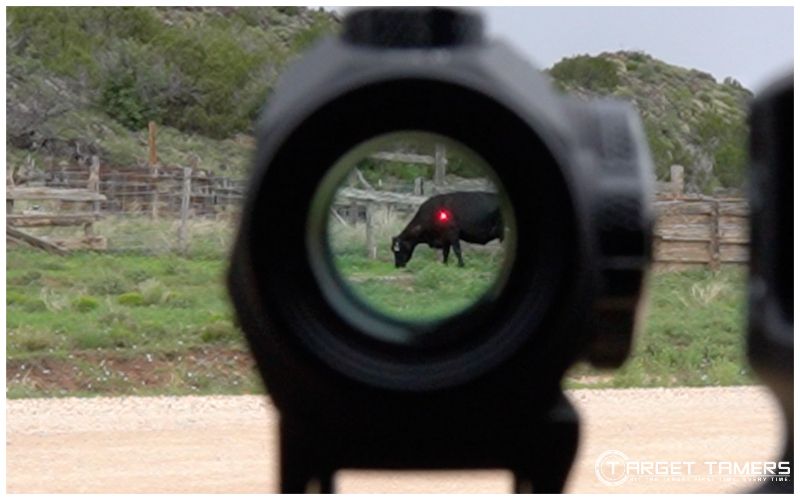
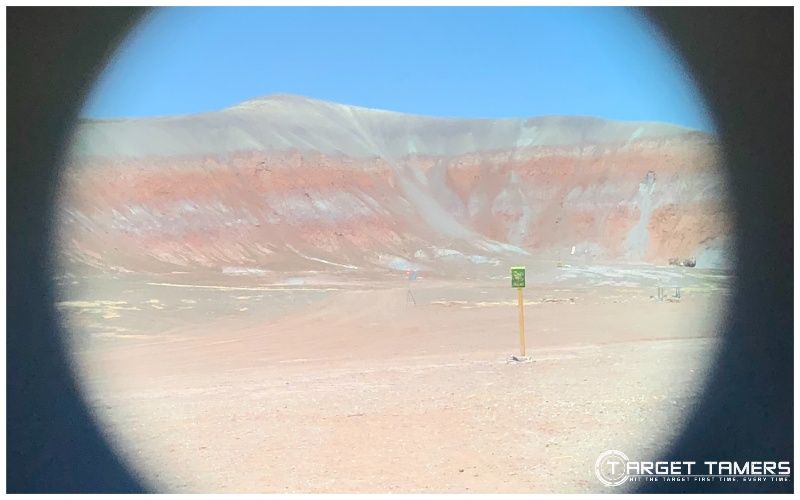
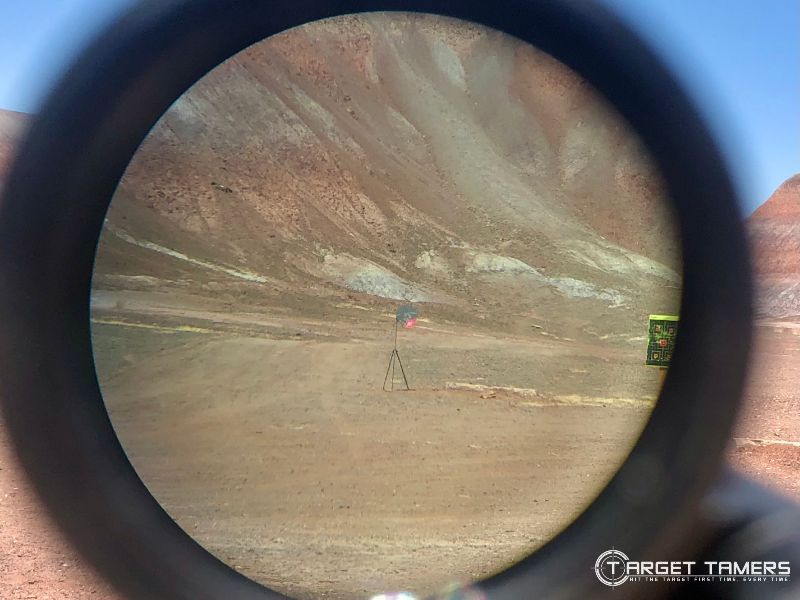
In general, a larger dot covers up more of the target at any given range compared to a smaller dot. The larger the size means it’s easier and faster to see and use but is less precise of an aiming point. The smaller the size means it might be a little slower to pick up, but it can be more precise.
Here is the subtension for 6 and 2 MOA dots at 25, 50, 100 yards (acceptable approximations).
| Dot Size | 25 Yards | 50 Yards | 100 Yards |
|---|---|---|---|
| 2 MOA | 0.5” | 1” | 2” |
| 6 MOA | 1.5” | 3” | 6” |
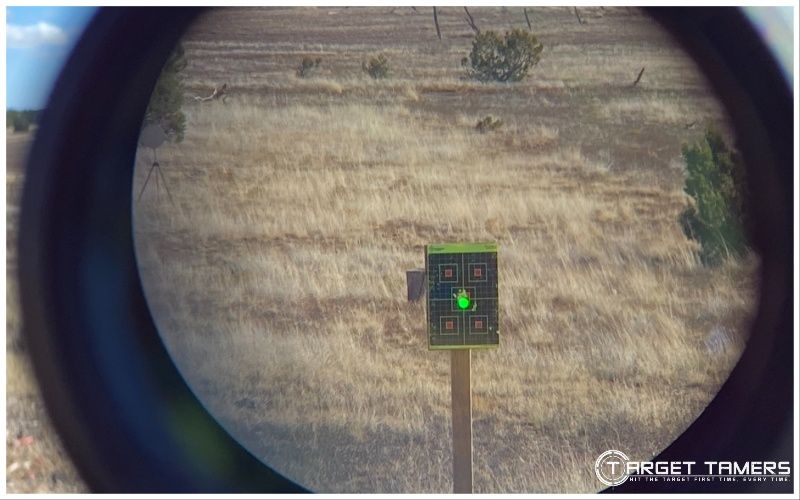
As you can see, a smaller dot can provide more accuracy when accuracy counts but at the cost of, perhaps, slightly slower dot acquisition. A larger dot is faster to pick up and use, especially with a strong and consistent index, but may be harder to be more precise at distance.
The type of accuracy you need from your red dot sight will depend on the target and circumstances. What are you shooting at and how far away is it?
Winner: Tie
Astigmatism
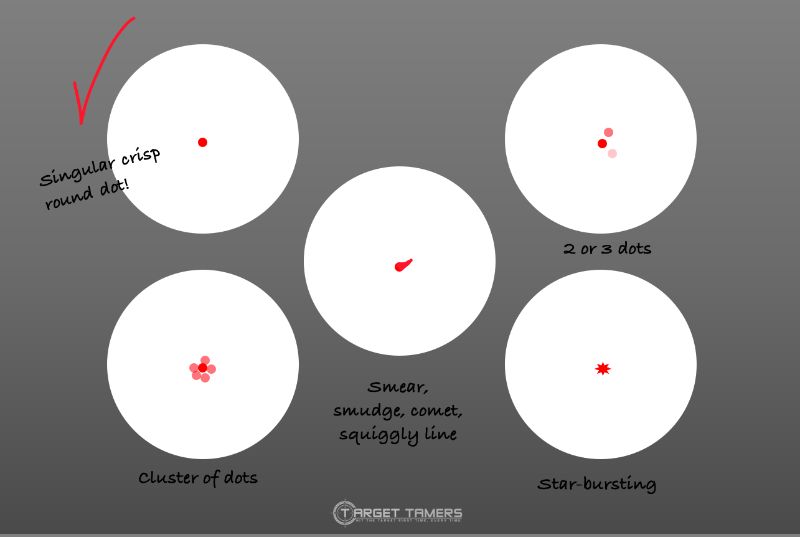
The best advice to reduce dot distortion if you have astigmatism is to shoot with your corrective glasses or lenses on. If you must shoot naked (without corrective measures), you should consider a prismatic red dot sight as the reticle system is illuminated in a different way than a reflex sight.
Prism sights or prism scopes use prisms for the optics, they usually have glass-etched reticles, and many offer fixed magnification. They might help to mitigate some of the problems you have with using a red dot sight if you have astigmatic eyes.
You might also want to try a green dot instead of a red dot. Though there are pros and cons to both colors, your eyes might be able to see the green illumination better at a lower intensity versus red illumination. It’s possible that the lower the intensity, the more tolerable the dot distortion might be for you.
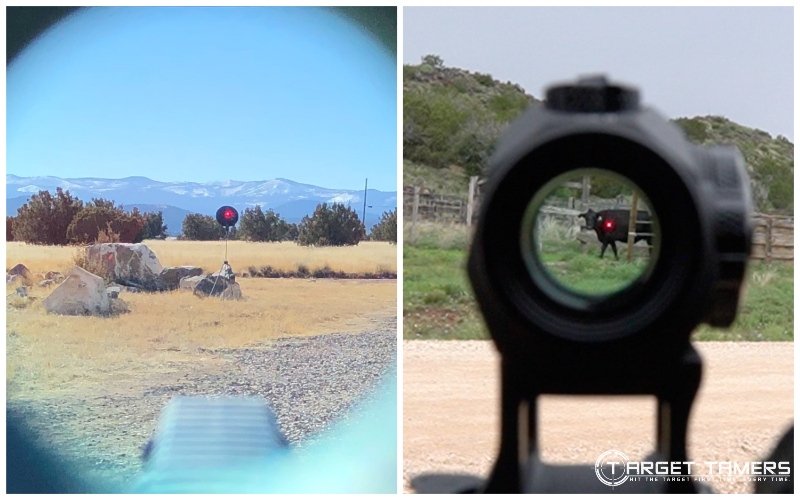

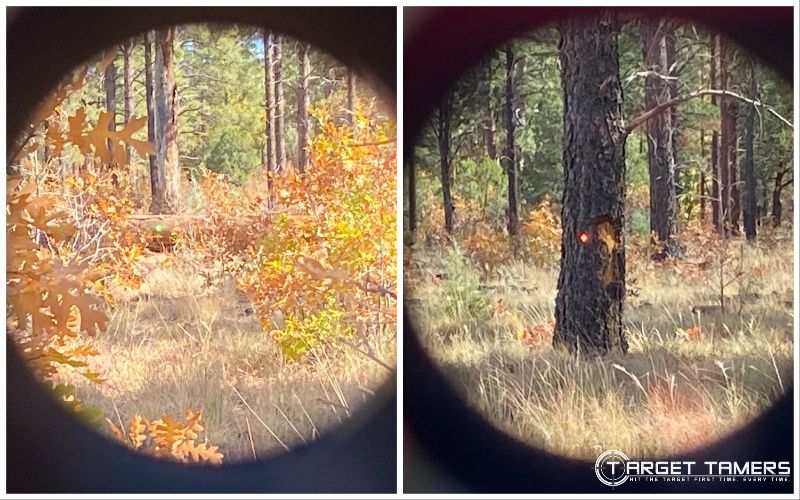
As far as dot sizes goes, what you see with a smaller dot might be worse as a larger dot. Additionally, a 6 MOA dot to someone with astigmatism might also appear to be an 8 MOA dot! A dot with a circle/ring may appear to have double circles/rings.
Bring into the equation the target size and you can complicate things further. The smaller the target, the more tempted you might be to focus on the dot instead of the target making the dot appear even more distorted.
Because everyone’s level of astigmatism is different, I highly recommend shooting with different dot sizes to gain experience for yourself – if it’s possible. The issue is that regardless of dot size, how crisp the dot appears to be will depend on your vision, and there seems to be a variation of dot performance between manufacturers.


In general, there is no single solution. If you’re currently having trouble with a small dot, try a larger dot in green illumination at a lower intensity. If you’re struggling with too much dot distortion with a big dot, try a smaller dot and don’t forget to remain target focused – not dot focused.
Winner: Tie
Speed
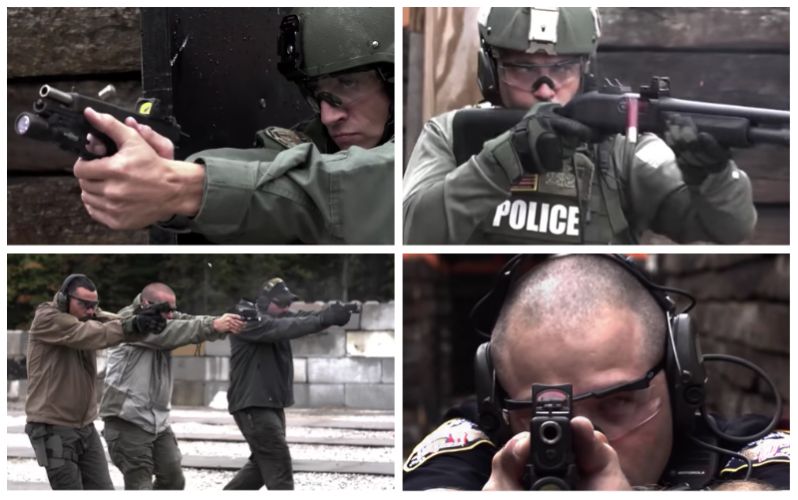
Overall, the 6 MOA dot is faster to use because the dot is physically larger thus making it easier for the eyes to pick up and maintain especially for follow-up shots. Some trained shooters can be just as quick with a smaller dot, but generally the larger dot is faster to use.
Winner: 6 MOA
Accuracy
In total, because a 2 MOA dot has minimal subtension on a target, it can be easier to be more precise with a smaller dot. Since a 2 MOA dot covers up only 0.5” of a target at 25 yards and 2” at 100 yards, it’s preferred for maximum accuracy.
Winner: 2 MOA
Moving Targets/Shooting While Moving
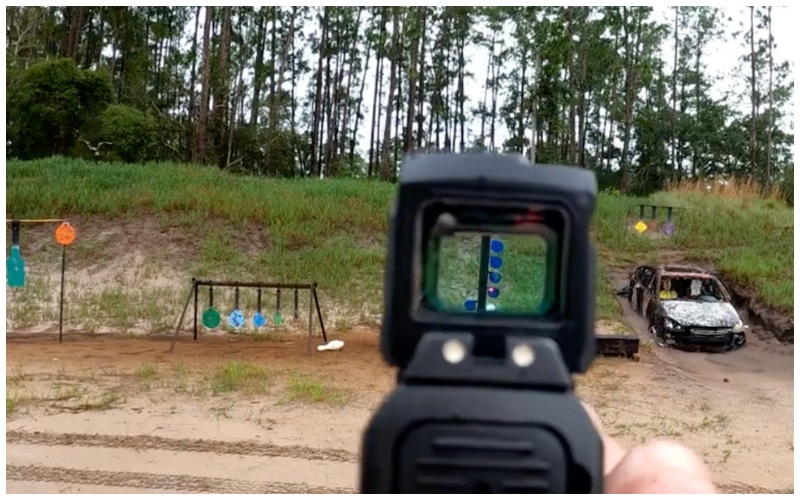
The benefits of a larger dot for speed and follow-up shots remains true when it comes to tracking moving targets and shooting while you, yourself, are mobile and on the move. A larger dot is easier and faster to see making it a rapid experience for acquiring the dot.
However, you can train and practice with a smaller dot to be just as proficient as having a larger dot. Though, it’s generally easier to see a larger dot and track it to retain sight alignment than a smaller dot for most people, especially those with vision problems.
Winner: 6 MOA
Long Range
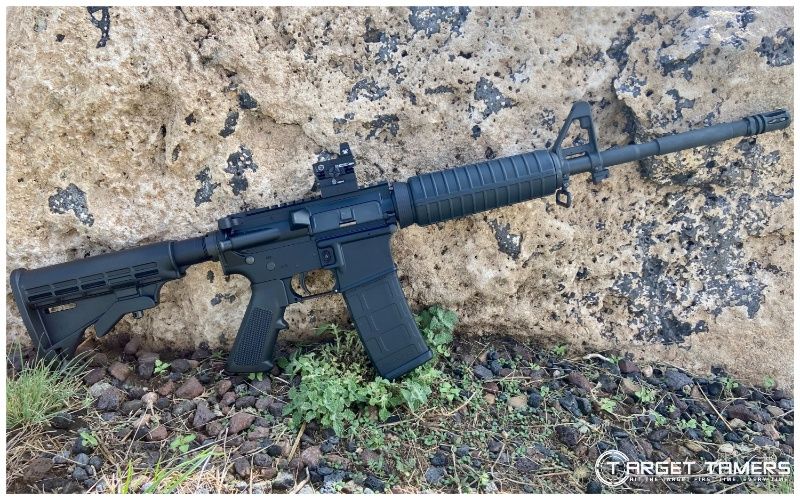
As distance comes into the equation, dot and reticle subtension increases. This means that a dot will increase in size the longer the distance. For maximum accuracy, a smaller dot is best. Consider the target, kill zone, and small grouping average you want to achieve.
At 200 yards, a 2 MOA dot is 4” in size, and if you’re aiming for an 8” steel target at that distance, you’re likely to hit it (depending on your firearm and ballistics). With a 6 MOA dot, that dot is now covering up 12” at 200 yards. Though you’re likely to still hit that 8” plate, there’s room for error since the dot is now larger than the plate at that distance.
For shooting beyond 100 yards, a smaller dot is better. In this case, the 2 MOA dot is the dot for the task.
Winner: 2 MOA
CQB/Self Defense
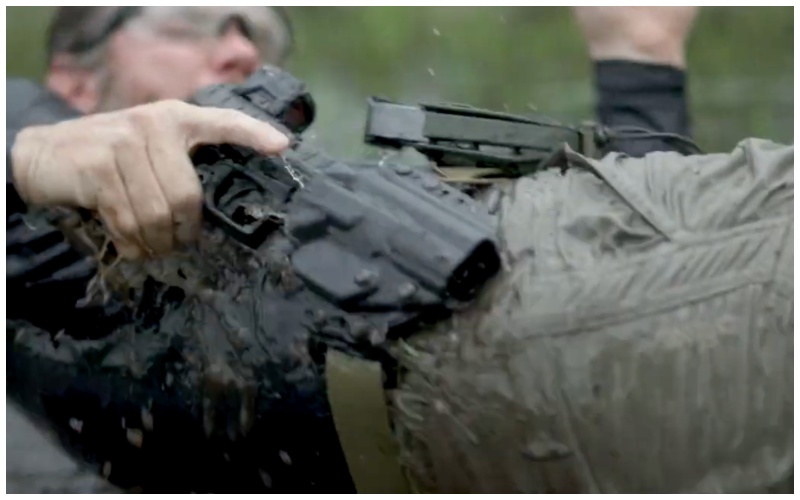
Overall, CQB can mean up to 100 yards if a red dot sight is on a rifle like an AR-15. However, if a red dot is mounted to a carry pistol, most self-defense engagements occur inside 10 yards. A red dot sight with a large dot that is quickly and easily visible is best suited to self-defense.
Even if the red dot sight is being mounted to a rifle for home defense applications, a large dot size is still preferable. It’s less about precision and more about speed at this point. A larger dot is faster to see, easier to keep in your sights when moving quickly, and faster to acquire for follow-up shots especially with high recoil firearms.
Winner: 6 MOA
Hunting
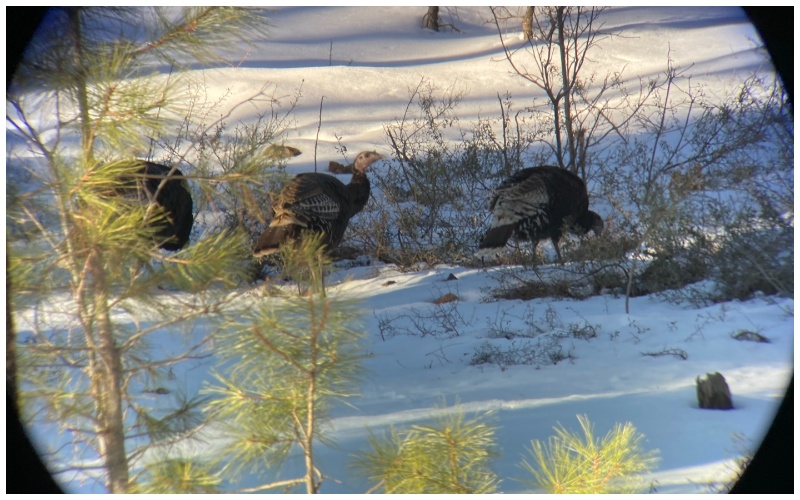
A 6 MOA dot will do the job well on a turkey gun, but a 2 MOA dot will provide a more precise POA at distance especially for a small kill zone. In general, red dots aren’t for maximum precision compared to riflescopes. However, they’re well suited to close range hunts inside 200 yards (approx.).
What are you shooting with and what are you hunting? Pistols won’t have the effective range of a rifle, and there are few mounting options if you’re not sporting a rail or purchasing mount adapters. For hunting handguns, a larger dot is likely best for fast dot acquisition and follow-up shots. Larger dots, like 3 MOA and 6 MOA, are also great for shotguns.
Generally, I’d say that for most hunting above 50 yards to about 200 yards, a 2 MOA dot will be suitable. It takes up less of the target helping to make each shot as accurate as it can be – minus user error.
In most cases for deer and elk hunting greater than 100 yards, I’d recommend a riflescope. This could be anything from a 1-6x LPVO and 2-7x32 scope to a 3-12x40 or 4-16x44 for longer ranges.
Though the type of hunting will affect what dot size you’ll need, accuracy is paramount for an ethical shot. A lot of the time, a smaller dot will give you that.
Winner: 2 MOA
Competition
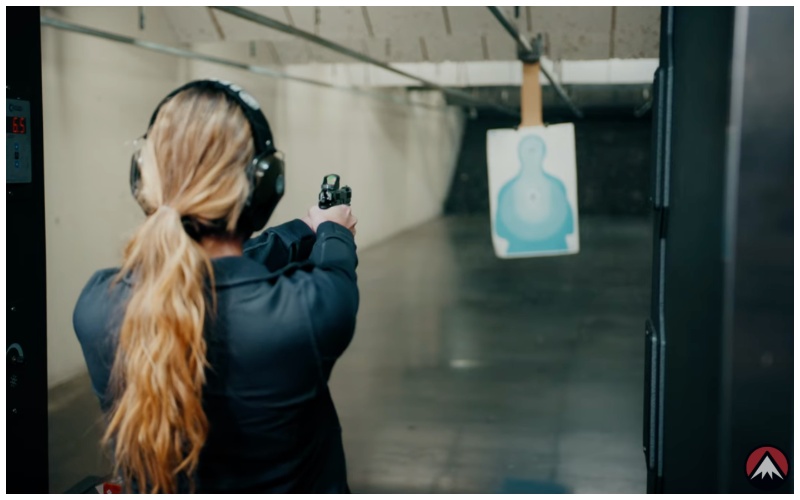
As is the case with most other applications, the type of competition shooting you’ll do matters. Even with that said, a 6 MOA dot is very common on pistols even out to 50 yards. With target coverage of almost 1” at 15 yards, 1.5” at 25, and 3” at 50 yards, it’s absolutely acceptable for matches.
The larger dot size provides rapid dot acquisition, high dot visibility, and speed benefits. However, a 2 MOA dot can be more precise with training to have it provide a realistic benefit in a match. If you’re using the same red dot sight and handgun for competitions and as a carry firearm, a medium dot size of 3 MOA is the norm.
When it comes to rifles and red dots, the 2 MOA dot will provide more accuracy at distance. For greater dot visibility, it will need to provide high illumination intensity in bright conditions. This can provide a fast and speedy experience when using a smaller dot in competitions.
Many competitive shooters, target shooters, and those in law enforcement will also pair a 2 MOA red dot sight with a magnifier to help improve dot and target visibility.
Winner: Tie
AR-15
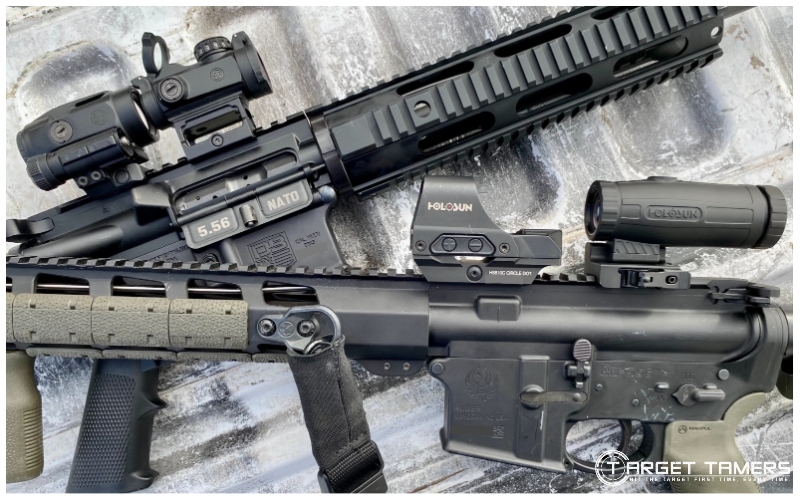
Red dot sights are excellent optics for the AR-15. However, when choosing a dot size for your flat-top MSR, the intended application must be considered. In general, a larger dot is faster to use in CQB and defensive engagements while a smaller dot can increase precision at range.
Many red dots that are intended for the AR-15 are micro enclosed red dot sights that are approximately 1.5 x 1.5 x 2.5” in size. There are also open red dot sights that have the HUD (Heads-up Display) design and are bigger than open style pistol red dot sights.
What you may notice in the red dot sight market is that many red dots intended for the AR-15, other centerfire rifles, and shotguns often have smaller dot sizes ranging from 2-4 MOA. Physically smaller red dots, like pistol red dots, tend to have larger dot sizes from 3-8 MOA, though there are some smaller ones out there like the field-tested Leupold DeltaPoint Pro with a 2.5 MOA dot.
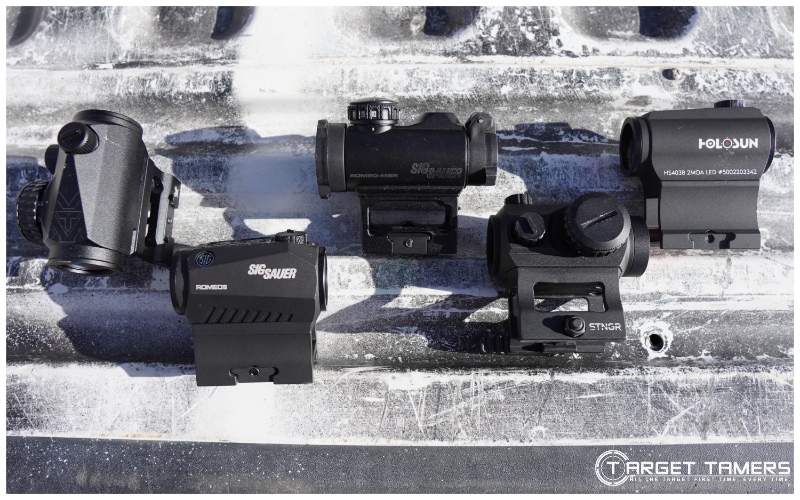
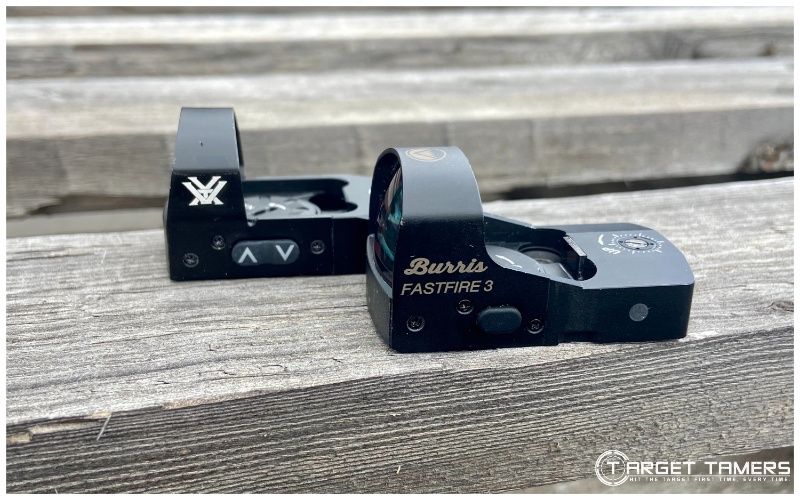
Moreso than not, these red dots come with integrated or pre-installed (and removeable) mounts specifically designed for Picatinny or Weaver rails. They have an optical height between 1.41-1.63” for a co-witness with BUIS and are easy to acquire a comfortable cheekweld with the straight stock and in-line action.
Pistol red dots may come with a rail mount in the box that can make them suitable for use on an AR-15 too, but a riser block may still be needed to come up to height.
Though it really depends on what you’re doing and how far out you’re shooting with a red dot sight, a 2 MOA dot is generally a proficient, multi-purpose dot for the AR-15.
Winner: 2 MOA
Pistol/Handgun
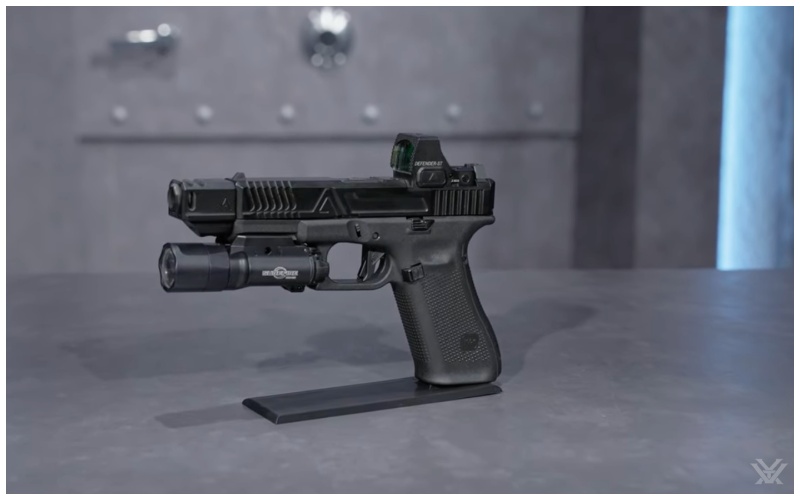
Pistols have limited mounting space narrowing down what red dot sights can be mounted to slide. Additionally, pistol slides have specific cuts with fixed bolt and socket patterns further narrowing down what red dots can be mounted. This is why there’s a market specifically for pistol red dot sights.
These red dot sights tend to be around 1.9 x 1 x 1” in size with a HUD design. Since pistols are used at CQB ranges, these red dots have larger dot sizes ranging from 3-8 MOA. However, there are some with smaller dots.
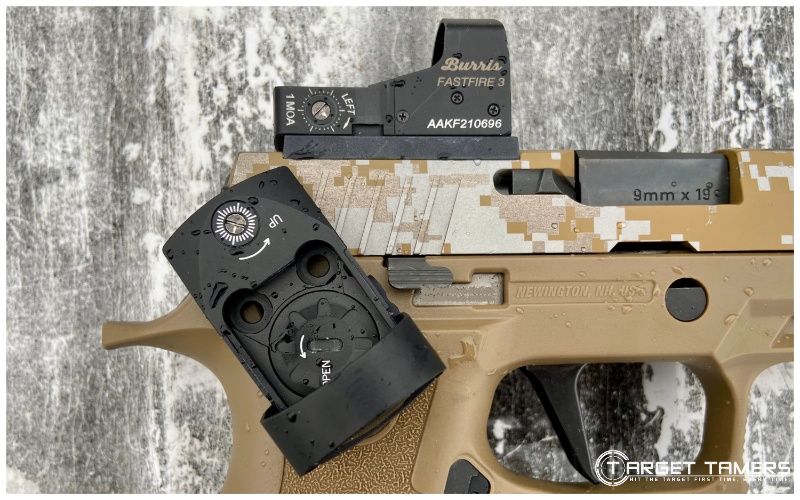
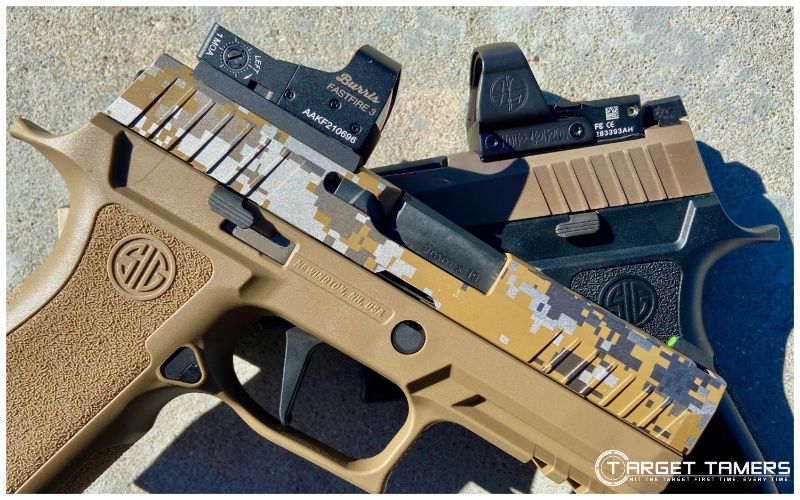
The larger dot is much easier to see and pick up than a smaller dot and is even faster to use than iron sights. A 3 MOA dot is a good place to start for a pistol that’s used in both competition and as a carry firearm. However, a 6 MOA dot is very popular as it’s bigger and faster to pick up especially when follow-up shots are required or if your handgun has some real good kick to it.
Winner: 6 MOA
FAQ's
For most carry pistols, shooting inside 25 yards, and shooters with failing vision, a 6 MOA dot is a suitable size for a red dot sight. With subtension of 1.5” at 25 yards, target coverage (subtension) is less of a concern as dot and target acquisition and speed become the priority.
Many red dot sights designed for the AR-15 and other centerfire rifles usually have a 2 MOA dot. This is an excellent size for precision, accuracy, and when distance is a factor. For most shooters with ‘good’ vision, there’s little to no issue in acquiring the dot.
Even on a pistol, a small dot can be acquired quickly with training and a strong index.
In general, 2 MOA is approximately 1” at 50 yards. The true MOA size of a 2 MOA dot at 50 yards is actually 1.047”. This means that a 2 MOA dot in a red dot sight will cover up about an inch of the target at 50 yards.
There are a few factors that must be considered when determining a red dot's use for self-defense: shooting ability, distance, and your vision. Though a larger dot, like 6 MOA, is best suited for extreme close range, a smaller dot, like 2 or 3 MOA, will provide better accuracy at distance.
A larger dot is also easier to acquire for those with poor eyesight, and it can be simpler to use for training and transitioning from iron sights to red dots. A smaller dot is still effective at close ranges, but you may need to turn the brightness up to ‘find’ it faster and acquire sight alignment.
Trijicon MRO – Best Overall
Aimpoint PRO – Best for Duty Use
Holosun HS403B – Best Shake Awake Red Dot Sight
STNGR Axiom II – Best Continuous-on Red Dot Sight
Sig Sauer Romeo MSR – Best Value
Bushnell TRS-25 – Top Rated Red Dot Sight
Vortex Venom – Best for the Money
Holosun EPS Carry – Best for Concealed Carry
Trijicon RMR Type 2 – Best 6.5 MOA dot
Aimpoint Micro H-2 (6 MOA dot) – Best for AR-15
EOTech EFLX – Best for Home Defense
Which is Better: 6 MOA or 2 MOA?
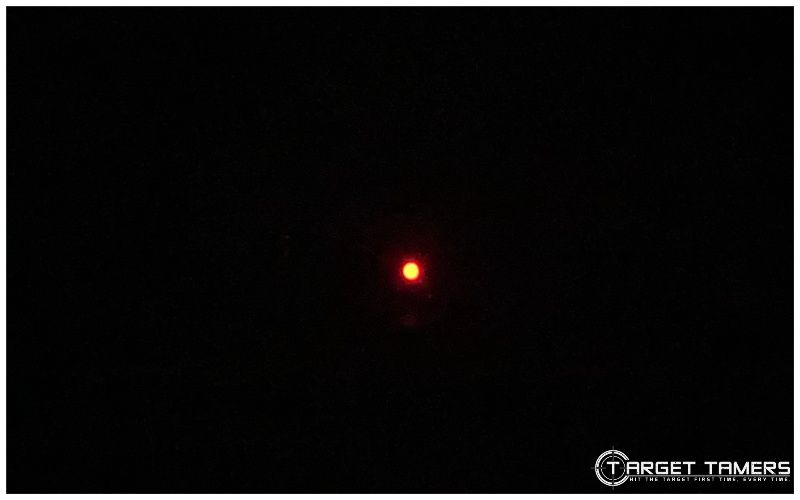
Overall, neither 6 MOA nor 2 MOA is better than the other. Small is great for range and precision while large is better for CQB and rapid sight alignment. It should be noted that many red dots for rifles have dots between 2-4 MOA while red dots for the pistol tend to have larger dots around 3-8 MOA.
Bear in mind that you must consider what you intend to do with your red dot sight 80-90% of the time. If you can be realistic about your shooting ability, make allowances for ranges you anticipate shooting, and how your eyes see the dot, you can make a more informed decision on the right dot size for you.
Further Reading

